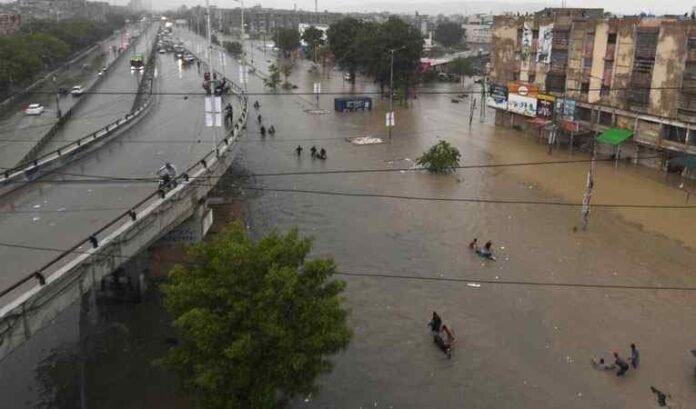Heavy monsoon showers continued to lash multiple regions of Pakistan this week, overwhelming drainage systems, disrupting power supply, and leaving several people dead or injured. Authorities are now bracing for worsening flood conditions as river levels rise across Punjab and surrounding provinces.
Cities Struggle With Flooded Streets and Power Cuts
From Lahore to Murree, torrential rain left urban areas waterlogged, halting daily life in several districts. Low-lying neighborhoods in Abbottabad, Narowal, Bahawalnagar, and Ferozewala faced significant flooding after hours of downpour. The heavy rainfall also tripped dozens of power feeders, plunging parts of the country into extended outages.
Two people in Lahore’s Kahna area were killed by lightning strikes, while a roof collapse in Ferozewala claimed the life of a woman and injured three others, underscoring the deadly risks associated with the seasonal deluge.
Sialkot Airport Shuts Down as River Levels Surge
Authorities were forced to suspend operations at Sialkot International Airport until August 31 after surrounding areas were inundated. Meanwhile, the Ravi River’s water discharge climbed to nearly 193,000 cusecs at Head Balloki, raising fears of further flooding downstream. Similar concerns persist along the Chenab River, where rising levels at Head Panjnad threaten nearby communities.
Meteorological Warnings in Place
The Pakistan Meteorological Department forecasts more widespread heavy rainfall through September 2, with Punjab, Khyber Pakhtunkhwa, Sindh, and Balochistan all expected to see further downpours. The National Disaster Management Authority (NDMA) has issued urban flooding alerts for several major cities, urging residents to remain cautious.
Pakistan’s vulnerability to extreme weather events has grown in recent years, with poor drainage infrastructure and unchecked urban expansion making many areas prone to flooding. The coming days will be critical as authorities monitor river flows and try to minimize casualties in flood-prone regions.

